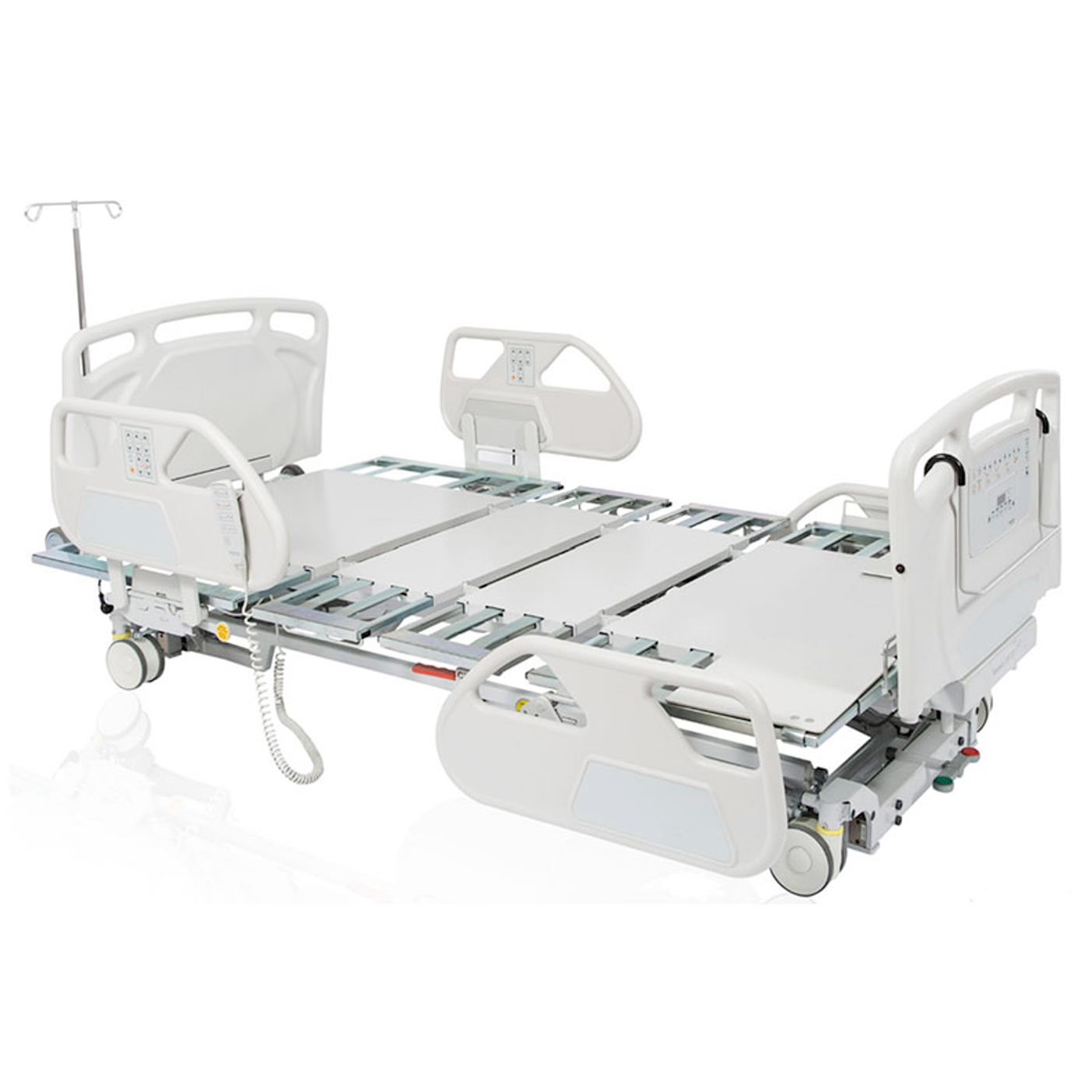Selecting a Bariatric Bed and Mattress – Five Key Considerations
When your patient’s body size, shape or weight means that they can’t interact with a standard environment, it is necessary to utilise specialist equipment. This will ensure that they are able to receive the best care possible, move and go about tasks as their ability allows.
When specialist equipment is ordered without delay, the patient’s basic needs can be met and length of stay, reduced.
An ultra-low bariatric bed such as the VersaTech 1100 can significantly support the recovery of a plus sized patient.
When selecting a bariatric bed and mattress, there are some critical factors and standards that you need to meet. Consideration should be given to the compatibility of a bed with a specialist mattress as these can vary in height.
1. Do the bed side rails comply with the Bed Rail Standards for Adults: BS EN 60601-2-52 and is there a side rail depth of 22cm with the mattress in situ?
2. Does the bed transport easily through the hospital, including lifts?
3. Does the bed meet the necessary weight limits required (Safe Working Load?)
4. Does the bed contour with the five typical body shapes of a plus sized patient?
5. Does the mattress fit the full width of the bariatric bed deck?
1. Compliance with Bed Rail Standards
Ensure that the bed’s side rails comply with the Bed Rail Standards for Adults: BS EN 60601-2-52 . Proper compliance minimises the risk of entrapment and injury, particularly with plus sized patients who may have varying mobility levels.
The correct use of bed rails is crucial for patient safety, especially when combined with different types of mattresses that vary in height. There needs to be enough depth of side rail (22cm) whichever mattress is selected.
2. Ease of Transport within the Hospital
A bariatric bed should be easily transportable throughout the hospital, including fitting into lifts. Width-adjustable beds are beneficial as they can be narrowed for transport and widened for patient care, ensuring accessibility to all hospital areas. This feature also aids in quick repositioning and efficient patient management.
3. Weight Capacity (Safe Working Load)
The safe working load refers to the maximum allowable weight that can be safely supported, including the patient, mattress, bed linens, and accessories.
Both the bed and mattress’ safe working load should exceed the patient’s weight to avoid potential accidents and enable full operation.
To allow for this, in addition to the safe working load, there is a maximum patient weight, which is lower, this allows for additional weight such as linen and pillows etc. to be accommodated.
4. Contouring to the Patient’s Body Shape
Plus sized patients often have different body contours that a general care bed may not accommodate. Beds designed to contour to the patient’s body can help distribute weight evenly, reduce pressure points, and enhance comfort. This customisation is vital for preventing pressure injuries, ensuring patient safety during movement and for cases where the patient is immobile, bring them into a comfortable seated position for inclusion in their environment.
5. Proper Mattress Fit
The mattress must fit the full width of the bed deck, especially when the bed is expanded to its full maximum width. An ill-fitting mattress can create gaps, leading to increased risk of entrapment or falls. Additionally, the height of the mattress relative to the bed rails should be assessed to prevent patients from slipping or falling out of bed.
By considering these five factors, healthcare facilities can ensure that they provide safe, comfortable, and appropriate care for plus sized patients. Always consult with your equipment suppliers and healthcare professionals to make the best-informed decisions.
For more information on bed rail standards and bariatric equipment, you can visit National Back Exchange.







